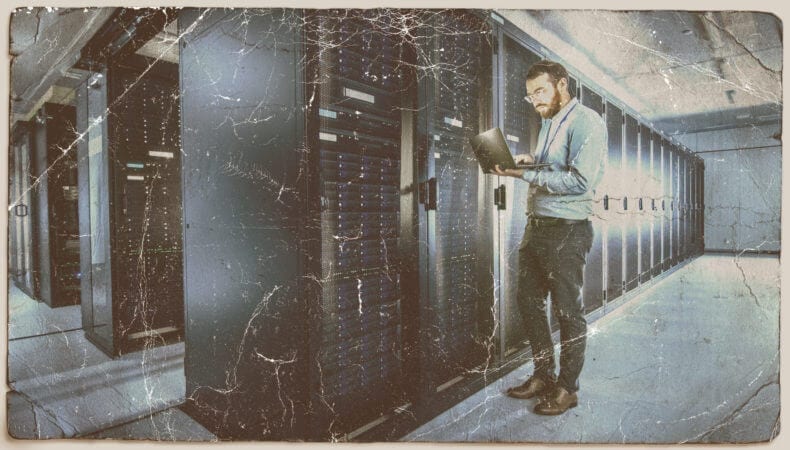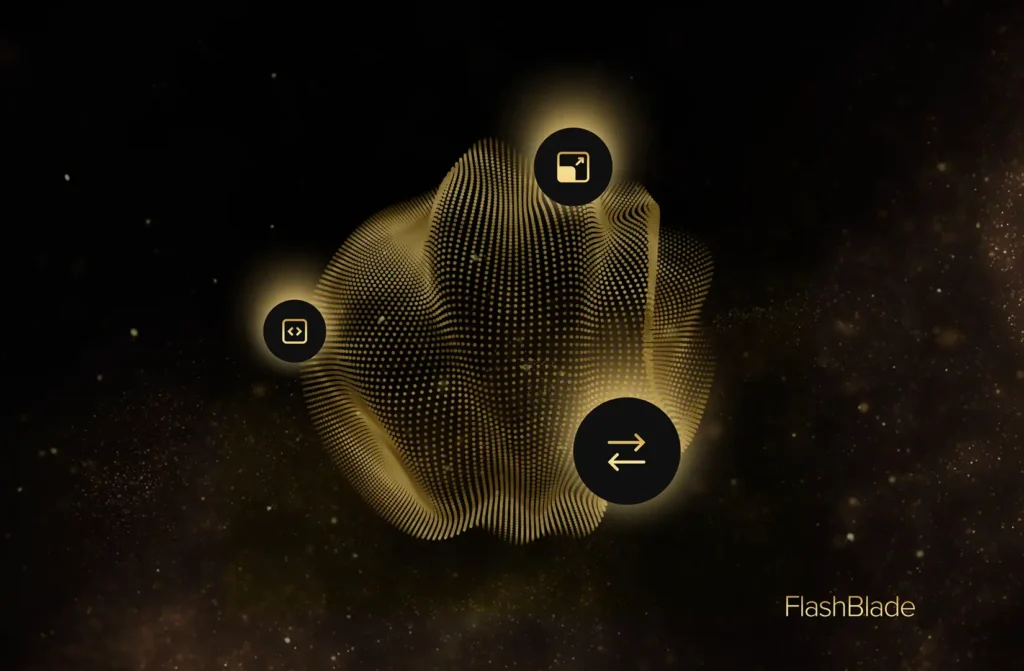You can’t teach an old dog new tricks.
This adage is true in technology architectures. Aging tech constructs ultimately collapse under their own weight, and in every market, a new approach comes along that disrupts the old one. It’s also true that every aging technology company staunchly defends their way as the only way, and that’s mostly because they no longer have the capacity to disrupt themselves. They typically won’t devote the required dollars to invest in innovation and they won’t accept the inevitable conversation with their customers where they are forced to admit that there is a new way to go.
The easier thing to do is attack innovation and customer-centric business models. We usually laugh this stuff off, but when the obfuscation starts to hurt customers, that’s when we feel the need to shine a light on this behavior.
In particular, Dell EMC has issued a series of blogs1 in yet another attempt to twist the truth to suit their needs and not the best interest of customers. From our perspective, the standard playbook over there appears to be creating FUD, not building great products.
What’s happening in this situation is a little like what happened in the music industry. Traditional players had a traditional definition of success – and it was embedded in putting music on CDs. Those legacy players controlled the market by creating the media the music lives on and controlling the market for the player required to listen to the music. Disconnecting the music from that process would disrupt the business cycle they relied on for decades, dating back to vinyl albums. The industry stuck with CDs for so long that they largely missed out on what was happening around them. New visionaries took the innovative route of disconnecting the music from the CD via streamed and downloaded mp3s, ultimately disrupting the market.
This change enabled Apple Music, Spotify, Pandora and others to rewrite the rules on behalf of customers by making music portable, flexible and useful in many different environments — freeing them from the constraints of CDs. In reality, what the disrupters did was create a music experience where the music is separated from the media and the media player, changing the user experience forever. A stateless architecture in enterprise storage provides the same flexibility disrupting traditional thinking, and in our opinion, the old guard just doesn’t get it. The benefits of a stateless controller are night and day compared to stateful controllers that require active, active components to keep your business running.
Let’s talk about what “Mission Critical” Really Means
Wikipedia describes a mission-critical system as “a system that is essential to the survival of a business or organization.” Mission-critical environments span a wide range of industries and applications, and mission-criticality is no less important to a small business that depends on their systems than to the world’s largest organizations.
The number one most important factor in determining whether a system can support mission-critical applications is its ability to deliver availability that is as close as possible to the ever-elusive 100% uptime objective that most mission-critical environments require. The important thing that all modern organizations have learned is that consistent high performance during operation is a mission critical requirement. Degraded operation is often the same thing as downtime to end users. Either your product meets these objectives, or it doesn’t.
So, how do AFA vendors compare? Key analysts have weighed in with their views regarding the relative strengths and weaknesses of the vendors in the all-flash storage market. You can see what Gartner says here, and see what IDC says here.
What constitutes a storage “Mission-Critical Architecture”?
While most agree that how many “nines” of uptime is a key metric, there is some debate as to what else defines an architecture as “mission critical”. Some large, legacy-mindset storage vendors say that “data in place” upgrades and dual-controller architectures are inherently risky and therefore less mission critical. Behind these claims is that the hard truth that they just haven’t figured out how to do it yet.
Pure’s modern FlashArray™ architecture has turned the concept of “active/active” vs. “active/passive” on its head as it provides both. Similarly, Pure’s Evergreen™ subscription model ensures non-disruptive, data in place controller upgrades every three years and functions more as a modern “storage as a service” offering on premises. This is in stark contrast to the legacy storage purchase model with typical maintenance extortion after a number of years. Clearly, Pure’s unique Evergreen storage innovation both challenges and disrupts the legacy storage business model, so it is understandable why some vendors would attempt to discredit our innovations as “non mission critical”. Nothing could be further from the truth.
We believe that it is our customers and their experiences that speak most credibly for Pure regarding how “mission-critical” our architecture has proven itself to be. Pure customers cite many reasons for their decisions to choose Pure, such as lower TCO, greater simplicity, better efficiency, higher performance, and yes, mission-critical availability.
FlashArray: A mission critical architecture with a better customer experience
Instead of just incrementally improving the existing storage products and architectures, Pure sought to change the entire customer experience as it relates to storage. Below are five revolutionary mission critical features of FlashArray.
1. Customer-proven 99.9999+% uptime as a single array
As discussed above, we believe that availability is probably the single most important measure of whether a system is mission-critical. FlashArray has not only proven itself in mission-critical environments, but as a result of its field-tested track record in demanding environments, healthcare has become one of Pure’s fastest growing markets. Pure’s included ActiveCluster synchronous replication software provides an even greater degree of availability. Here’s some detail on how we do it. Our Pure1 Meta™ cloud-based predictive analytics allow us to identify and resolve potential issues before they become actual problems, significantly helping our customer’s uptime.
2. Non-disruptive, data-in-place, controller upgrades without performance impact, and controller failover without performance impact.
The conventional legacy view of storage controllers as being either “active/active” or “active/passive” does not really apply to the FlashArray architecture – it’s something a bit different, with the best of both worlds. When you’re stateless it doesn’t matter — companies with old technologies tell you that you can’t do this not because you shouldn’t, but rather because they cannot. The front-ends of both controllers for FlashArray are “active/active”, with the paths cross-connected across each controller so that either controller can see all paths, and support the performance of all paths. Internally, the two controllers communicate actively and one passes its I/O to a designated primary back-end where each back-end is sized to be able to handle the workload of the entire system for primary software functions, such as data compression, deduplication, encryption, snapshots, active/active multi-system clustering, etc. Since both back-ends can individually handle 100% of the system load, if there is ever a controller failover, there is no tangible performance impact. Since the controllers are “stateless”, this enables online, non-disruptive controller upgrades (one at a time) without impacting performance, while eliminating traditional data migrations. In our experience, customers love this feature, and it is often cited as one of the key reasons that they replaced their legacy storage with Pure Storage, particularly in mission-critical environments.
3. Industry-leading data reduction and total data efficiency which enables Tier-1 performance at Tier-2 prices.
From the very beginning, Pure envisioned all-flash and evolving solid-state technologies as the way of the future, but realized that the price needed to be much closer to that of conventional storage. Pure correctly foresaw that integrating advanced data reduction technologies was the answer. This enabled adoption by the masses for the majority of data storage requirements, providing Tier-1 performance and enterprise mission-critical features at Tier-2 prices. It also allows FlashArray to span a much broader range of the storage market with a single architecture – the same markets for which others tend to offer many different and incompatible architectures.
4. A laser focus on simplicity
Pure’s simplicity needs to be experienced to be believed. Possibly the one statement that we hear the most from customers is along the lines of “It all sounded too good to be true”. There’s only one box to unpack. The installation manual is a single tent card the size of a business card. There can be as few as only six cables to connect. All of the array software, including even multi-site ActiveCluster remote replication, is standard and included, without separate licenses. There is no need for performance tuning, and QoS is standard, included, and transparent. Our Pure1® cloud-based predictive analytics, problem identification, and problem resolution are standard, included, and transparent. We know, it does almost sound too good to be true, which is possibly why our existing customers give us a current Satmetrix-audited Net Promoter Score of 86.6 – among the highest of any B2B company in the world. Please talk to our existing customers so that they can tell you why, and you might want to ask other storage vendors what their NPS score is (and who if anyone audits it).
5. Flat and fair maintenance, inclusive of (non-disruptive, data in place) controller upgrades every three years, with our Evergreen™ subscription model.
It’s more like “storage as a service” than conventional storage purchases, and it’s enabled by the difference in our product architecture that can allow possibly as much as a 7 to 10 year platform depreciation, rather than merely a marketing or financial program added to a less-flexible product architecture. The bottom line is almost certainly superior TCO, with clear and predictable lower costs. Here’s a blog about what customers and analysts say about Evergreen.
At Pure, we believe that the voice of our customers, your peers, speaks best for how well we deliver for them in their mission-critical environments. Talk to any of the existing Pure customers that run Pure for mission-critical applications – especially those that moved on from legacy storage vendors to Pure Storage. Gartner Peer Insights and IT Central Station are a great place to start.
Maybe ask them about why they made the switch and what their experience has been, especially around the issue of meeting their mission-critical expectations. Or please contact us, we’d love to help make a connection for you!
Footnotes
(1) https://www.dell.com/en-us/blog/catch-midrange-momentum/
(1) https://www.dell.com/en-us/blog/pure-storages-evergreen-storage-program-marketing-solution/




